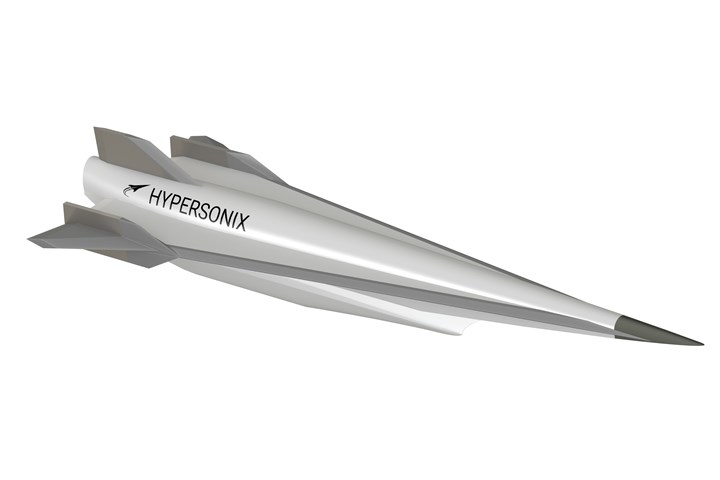Australian hypersonic UAV project awarded $2.95 million federal funding
The DART CMP will be a hydrogen-powered, reusable, hypersonic unmanned aerial vehicle (UAV) using newly developed ceramic matrix composites (CMC).

A group of Australian industry partners have been awarded funding to develop a hydrogen-powered, composites-intensive unmanned aerial vehicle (UAV) able to travel at hypersonic speeds up to Mach 12, or twelve times the speed of sound.
The project, called “DART CMP Airfame – a reusable hypersonic platform,” has been awarded a $2.95 million Cooperative Research Centres Projects (CRC-P) grant from the Australian federal government and involves Australian partners Hypersonix Launch Systems (Sydney), the University of Southern Queensland (Toowoomba), LSM Advanced Composites (Harlaxton) and Romar Engineering (Sefton). The project will begin in July 2022.
The UAV will be powered by the SPARTAN hydrogen fueled scramjet engine that takes oxygen from the atmosphere – a fact said to reduce weight by 60% compared to rockets.
Along with zero carbon dioxide emissions due to green hydrogen fuel, the development of new high temperature composite materials in this project will enable DART CMP to be reusable as well, Hypersonix says. With its technology, the company aims to lead a new era of “green access to space.”
The project will reportedly deliver a new sovereign manufacturing capability for high temperature oxide-oxide ceramic matrix composites (CMC). The deliverables include a complete UAV airframe including composite aeroshell and aerodynamic control surfaces, flight avionics and hydrogen fuel system.
According to David Waterhouse, Hypersonix managing director, DART CMP is the composite version of the DART AE that is due for launch in 2023. “AE stands for Additive Engineering and is the fully 3D printed version out of high temperature alloys that are already available in Australia. The type of high temperature composites we require for DART CMP are currently not available here, therefore there is an urgent need to develop these materials in Australia.”
Waterhouse notes that the project’s CMC materials are expected to be available by mid-2025. The material will be developed and tested by the University of Southern Queensland. Three Ph.D. students will be supported via the grant and project as well.
Professor Peter Schubel, executive director of the University of Southern Queensland’s Institute for Advanced Engineering and Space Sciences, adds, “Our expertise in liquid molding technologies, automated fiber placement (AFP), pultrusion and filament winding capabilities with exotic materials allows us to develop revolutionary structures. As an industry-focused research and technology organization, we are committed to delivering real-world, large-scale solutions for our clients, utilizing our extensive laboratories and manufacturing equipment.”
Additive manufacturing (AM) will be used where possible, covered by Romar Engineering, which has developed significant capability in materials characterization for metal 3D printing and has established manufacturing expertise using L-DED and L-PBF technologies. The Romar Advanced Manufacturing team offers engineering solutions from early stage design and prototyping through serial manufacture of space rated components.
Related Content
-
Watch: A practical view of sustainability in composites product development
Markus Beer of Forward Engineering addresses definitions of sustainability, how to approach sustainability goals, the role of life cycle analysis (LCA) and social, environmental and governmental driving forces. Watch his “CW Tech Days: Sustainability” presentation.
-
Plant tour: Arris Composites, Berkeley, Calif., U.S.
The creator of Additive Molding is leveraging automation and thermoplastics to provide high-volume, high-quality, sustainable composites manufacturing services.
-
Microwave heating for more sustainable carbon fiber
Skeptics say it won’t work — Osaka-based Microwave Chemical Co. says it already has — and continues to advance its simulation-based technology to slash energy use and emissions in manufacturing.

.jpg;width=70;height=70;mode=crop)














